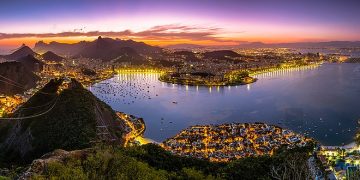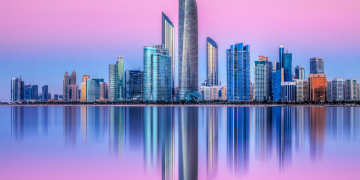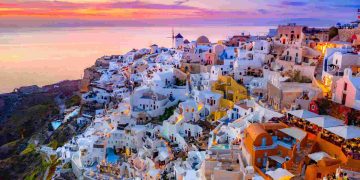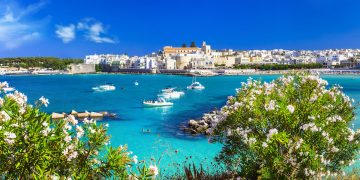Iceland has long been a land of dramatic contrasts—fire and ice, wind and stillness, silence and storm. But in 2024, as seasoned travelers seek deeper, quieter, more soul-stirring experiences beyond the tourist-heavy Golden Circle, they are being drawn to places that offer not just scenic beauty but personal renewal. Among them, Iceland’s hidden geothermal pools—especially secret canyon springs like Laugarvellir—are emerging as the backdrop for emotional transformation. Tucked far from Reykjavik’s buzzing tour hubs, these thermal sanctuaries are not about pampering or posing, but rather about feeling humbled, held, and strangely reborn by nature’s raw intimacy. For those who travel to remember what it means to feel small and alive all at once, these quiet pockets of heat and water in Iceland’s wild interior are becoming spiritual destinations.
Micro-Influencers Turn the Spotlight on Iceland’s Untamed Soaks
While the Blue Lagoon still draws waves of tourists with its milky turquoise waters and spa-like amenities, a quieter revolution is happening on social platforms. Micro-influencers—often with under 100K followers and a deep affinity for off-the-grid places—are pulling back the curtain on Iceland’s lesser-known geothermal wonders. Laugarvellir, nestled in the highlands near the edge of the eastern interior, has become the poster child for this shift.
What makes these influencers different is their tone. Their posts rarely scream excitement or show perfectly posed bodies. Instead, they quietly document a mood: fog rolling through mossy canyons, steam rising from a pool tucked in a volcanic ravine, the sound of boots crunching over black gravel in the early morning frost. These creators champion the emotional landscape as much as the physical one, inviting followers to see these hidden hot springs not as trendy checkboxes but as places to feel something profound.
Laugarvellir in particular—accessible only by highland roads that close in winter and require patience even in summer—has captivated a generation of slow adventurers. The pool itself is small, fed by a warm waterfall that tumbles into a rock basin surrounded by moss, basalt walls, and a silence so deep it feels physical. It’s not about glamour. It’s about surrender.
The Journey In Shapes the Experience
Part of what makes Iceland’s secret hot springs feel transformative is how hard-won they are. Unlike commercial spas, reaching Laugarvellir and similar sites like Hveravellir or Reykjadalur requires a commitment—long drives on rough roads, hiking across alien landscapes, braving wind and sleet, and reading weather forecasts like sacred texts.
There’s an intimacy forged in that effort. The hike in might strip away comfort, but the reward is solitude in warm water under a shifting sky. No lines, no locker keys, no chlorinated jets—just you, the earth’s heat, and the occasional raven gliding overhead.
This physicality becomes metaphorical. Shedding your layers—literally and emotionally—as you approach the pool becomes a ritual. Dipping into the spring, letting hot water seep into travel-tired limbs, feels like a shedding of urban stress, digital noise, and the masks worn in daily life.
In that sense, Iceland doesn’t just offer beautiful views. It offers emotional contrasts, the kind that mark moments as meaningful. The body relaxes, yes—but so does something deeper.
Emotional Transformation in Nature’s Extremes
Geothermal bathing has always been a deeply personal act, but in Iceland, it takes on mythic weight. There’s something in the landscape—the black volcanic plains, the impossibly green moss, the ferocious winds—that invites emotional openness. Being immersed in warmth while surrounded by such untamed wildness creates a paradox: a sense of safety in the midst of intensity.
Travelers often describe feeling cracked open in these pools. Tears come unexpectedly. Quiet descends. A sense of perspective arrives, unforced. The silence is not empty—it’s full of the hum of geothermal activity, of wind whispering through canyons, of your own heartbeat slowing down.
People go in with cluttered minds and leave with clarity. It’s as if the land demands honesty, offering no distractions or comforts other than what the earth itself provides. You’re not a guest here—you’re part of it, briefly, before retreating back to roads and routines.
Some speak of the water as if it cleanses more than skin. And perhaps it does. There’s a long history in Nordic and Arctic cultures of thermal water being a site of not just physical healing, but spiritual reconnection. In 2024, that legacy continues—not through ritual chants or formal ceremonies, but through quiet moments of rewilding the self.
Chasing Awe, Not Crowds
The people flocking to Iceland’s hidden hot springs aren’t after trends. They’re after awe—an emotion so often lost in the algorithm-fed loops of modern life. These travelers aren’t looking for the most luxurious pool or the most photogenic backdrop. They’re chasing the feeling of standing in something bigger than themselves, of pausing long enough to be changed by silence.
What Iceland offers—especially in places like Laugarvellir—is not just beauty, but presence. The kind of presence that burns away distraction. You can’t multitask when you’re waist-deep in volcanic water in a fog-shrouded canyon. You can’t rush the experience. You surrender to it.
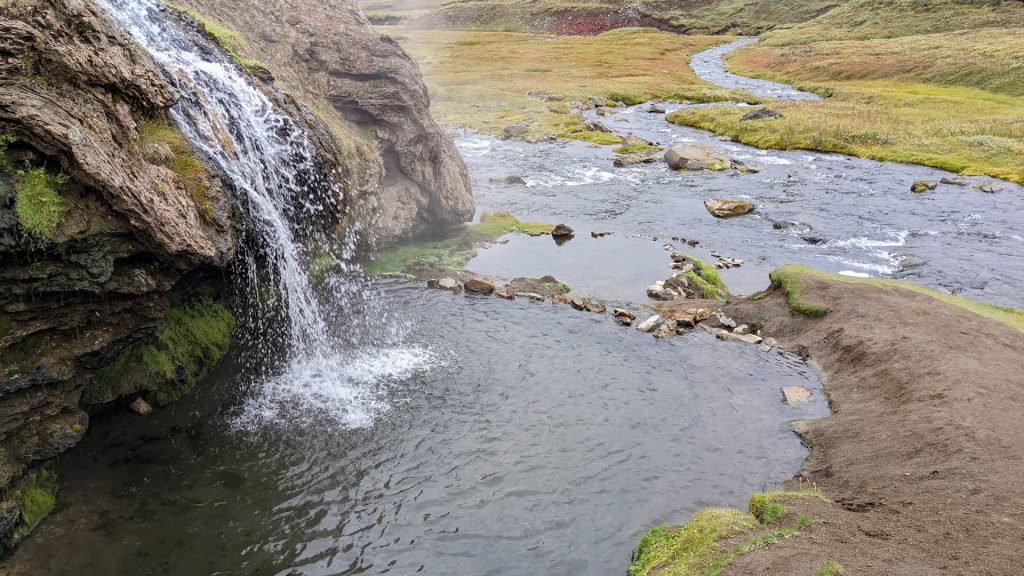
These moments—raw, unscripted, oddly emotional—are becoming the new travel luxury. Not curated perfection, but honest experience. Not mass appeal, but personal reckoning.
For solo travelers, nature writers, couples healing from burnout, or seekers looking for something unnamed, these geothermal pools serve as soft landings. And for many, that soak becomes one of the most quietly memorable parts of their Iceland trip—not because it was grand, but because it was honest.
The Growing Appeal of Wild Wellness
As the wellness industry expands globally, Iceland’s geothermal sites are quietly carving out a niche within the “wild wellness” movement—one that rejects commercial polish in favor of elemental simplicity. The idea is not new: humans have always turned to hot springs for healing. But in 2024, the hunger for authenticity has made that impulse feel newly relevant.
Wellness travelers are now swapping spa menus for topo maps, seaweed wraps for mud underfoot, and cold plunges in icy rivers. In Iceland, this shift is not manufactured—it’s natural. Geothermal energy is simply part of life here. But choosing to engage with it on Iceland’s own terms, far from curated bathhouses, is what transforms the experience from relaxing to rebirthing.
This wild wellness isn’t about biohacking or status. It’s about humility. To sit in a naturally heated canyon pool surrounded by volcanic silence is to return to something ancient—an understanding that wellness can be as simple as warmth, solitude, and time.
Responsible Discovery in Fragile Places
With increased interest, however, comes responsibility. Iceland’s geothermal pools are part of a fragile ecosystem. Many are not marked on maps for a reason. Laugarvellir, for example, is remote not just to create mystery, but to protect it from overuse.
Travelers seeking these secret springs are urged to tread lightly—leave no trace, avoid loud group visits, and never alter the landscape for a better photo. The magic of these places lies in their untouched quality, their absence of structure and signage. To love them is to preserve them.
Local conservation efforts and guides are beginning to balance access with protection. In some cases, visits to sensitive geothermal zones are best made with small, environmentally conscious tour groups that educate as much as they guide. The idea is not to gatekeep—but to safeguard.
In a world where beauty is so often consumed and then discarded, Iceland’s wild hot springs remind us of what it means to be a respectful guest—to take only warmth, leave only stillness.
Conclusion: Rebirth by Steam and Stillness
So can you really feel reborn in Iceland’s secret canyon hot springs? If rebirth means a quiet return to your essential self, then yes. If it means laying down the noise and armor of everyday life to float in the embrace of the Earth’s breath, then absolutely.
Places like Laugarvellir are not travel destinations in the traditional sense. They’re thresholds. Crossing into them means crossing out of routine, shedding performance, and stepping into a version of the world that moves more slowly, listens more deeply, and asks you to do the same.
And when you emerge—skin flushed, eyes soft, silence ringing in your ears—you may find that the landscape is still the same, but you are not. That’s not tourism. That’s transformation.



